Early immigrants and students from Korea in America watched with sorrow as their homeland fell under the rule of Japan, striving tirelessly to restore their country by any means necessary. However, the humiliating annexation of Korea by Japan occurred in 1910. Following this, independence movements within Korea faced severe repression, while active independence efforts flourished abroad, where freedom of speech and action was more prevalent.
Particularly, Koreans in America, despite being a great distance from their homeland, played a crucial role in supporting and leading most of the overseas independence movements.
The efforts and sacrifices of these individuals laid the groundwork for the joy of liberation that came to our nation on August 15, 1945. Across various parts of the world, there remain traces of the patriotic ancestors who could not forget their homeland and shed tears and sweat worrying about its future. However, as time passes, the remnants and historical sites from that era are gradually forgotten by us.
This is likely because the lives of subsequent generations of immigrants have been exhausting, and in their dedication to establishing roots in this society, they have lacked the leisure to preserve the history of their immigration.
Even those living right next to these historical sites often know little about their significance.
Now, as we surpass a century of immigration, it would be beneficial to reflect on the relics of early immigrants and, if circumstances allow, seek ways to preserve and pass them down to future generations.
History gains more substance and meaning when specific locations are presented, making it easier to pass on to future generations.
We will explore significant historical sites in Northern California, particularly in the San Francisco area, as well as in Central and Southern California.
Northern California San Francisco Area
The early immigrants who arrived in Hawaii from 1903 began migrating to California in 1904 in search of better working conditions.
At that time, whether coming from Hawaii or elsewhere, San Francisco was an essential gateway for entering the mainland United States.
San Francisco had mostly clear and cool weather throughout the year, reminiscent of autumn in Korea. The treatment of workers was also better than in Hawaii, and the variety of job options naturally attracted Koreans to this area. Consequently, this became the first place where Korean gatherings, organizations, and associations formed, becoming the primary center for the anti-Japanese movement aimed at restoring national sovereignty.
San Francisco is where the first Korean social club was established and where the first church was founded. It was also the site of the first women’s association and housed the North American Korean National Association until 1938. The assassination attempt by Dr. Jang In-hwan also took place here, serving as a catalyst for both domestic and international anti-Japanese movements.
For these reasons, it is only natural that San Francisco is regarded as the first city of overseas Korean heritage.
Angel Island: P.O. Box 318, Tiburon, San Francisco, CA 94920
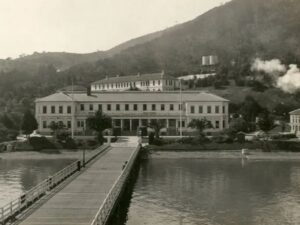
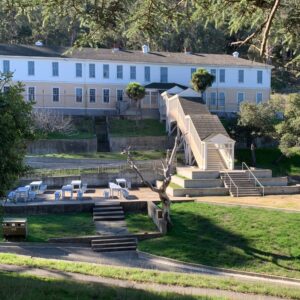
Currently known as Angel Island State Park, it is a California state park.
This was the location of the immigration station where Korean immigrants and students entering the U.S. via Hawaii underwent health inspections and other entry procedures. Those who fell ill or had contagious diseases during the long sea voyage were denied entry into the United States.
Individuals with issues often had to stay for extended periods in the detention center on Angel Island. Many who traveled such a long distance by ship only to be sent back after failing a health inspection likely felt that this island was more like a devil’s island than an angel’s. Originally, Angel Island served as a military stronghold for the United States starting in the 1850s, and remnants of military installations can still be found today. The immigration station was built on Angel Island in 1905, and it began full operations in 1910, continuing until its closure in 1940.
The Site of the Public Association Headquarters – 938 Pacific Ave. San Francisco

On November 4, 1905, the Public Association was established here with the aim of mutual support among compatriots and patriotic activities against Japanese rule. This was the first headquarters of a Korean organization on the mainland, effectively serving as the representative institution for the Korean community in America. The “Gongnip Sinbo” newspaper was also published here.
Prominent figures such as Ahn Chang-ho, Song Seok-jun, and Jeong Jae-gwan were active in this location, which is now a private residence.
Fairmont Hotel: 950 Mason St. San Francisco, CA 94108
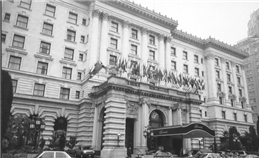

This hotel was where pro-Japanese American Stevens stayed before being shot by Jang In-hwan. He was a diplomatic advisor to Korea, tasked with working for the benefit of Korea. However, upon arriving in San Francisco, he made the outrageous statement in an interview with the Chronicle that “Japan has done many beneficial things for Korea since it began to protect Korea, and the relationship between the two countries is becoming increasingly close, with Koreans welcoming Japan.”
Upon reading this article, Koreans were outraged. They gathered at the Sanghang Korean United Methodist Church to elect representatives to confront Stevens and condemn his pro-Japanese actions. Consequently, four Korean representatives, including two members from the Public Association and two from the Dongbok Association, went to the Fairmont Hotel to meet Stevens.
Stevens, having received word that Orientals were coming to see him, mistakenly thought they were Japanese and came down to the lobby. The Korean representatives criticized and protested his statements, asking, “What beneficial things have happened to Korea? Which Koreans are welcoming Japan? Why are you working for Japan instead of Korea?” However, Stevens insisted that he had said nothing wrong.
In a fit of anger, one of the Korean representatives picked up a chair from the lobby and struck Stevens, while the other three also attacked him, causing him to bleed and sustain injuries. Hotel staff intervened to break up the fight, and as a crowd gathered, the Korean representatives loudly explained their reasons. The police who arrived understood the representatives’ indignation and refrained from arresting them, urging them to go home.
The Fairmont Hotel still stands today, where presidents from Korea stay when they visit.
Palace Hotel – 2 New Montgomery St. San Francisco, CA 94105
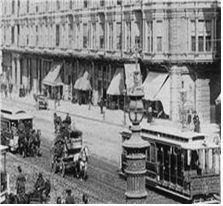
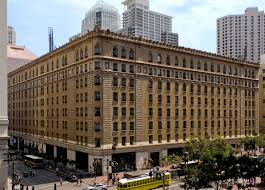
Now the Sheraton Palace Hotel, this was where the first diplomatic mission sent to the U.S. stayed in 1883. In 1888, the first ambassador to the U.S., Park Jeong-yang, and his party also arrived and stayed in room 840 on the sixth floor, later moving to room 433 on their return journey. The hotel was rebuilt in 1909 after being destroyed by the 1906 earthquake and fire.
Opened in 1875, the Palace Hotel was the most luxurious seven-story hotel in the world at the time and became a symbol of San Francisco. When the Korean delegation arrived, the hotel had an elevator, and there is a story that Park Jeong-yang and his party panicked and screamed, thinking an earthquake had occurred when the elevator began to move.
Ferry Building
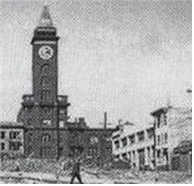
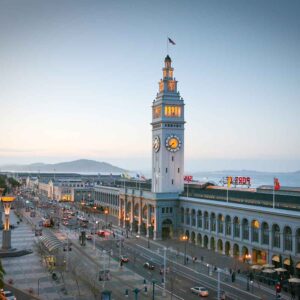
The Ferry Building, where Dr. Jang In-hwan and Dr. Jeon Myeong-woon shot Stevens, still stands in its original form on Embarcadero St. It is now designated as a commercial area and is expected to transform into a large shopping center in the future. After being attacked by Koreans in the hotel lobby, Stevens felt threatened and hurried his schedule. To travel to Washington D.C., he needed to take a ferry from the Ferry Building to Oakland and then catch an eastbound train from the Oakland station. However, Jang In-hwan and Jeon Myeong-woon were waiting for him at the Ferry Building. On the morning of March 23, 1908, at 9:10 AM, three gunshots rang out, and Stevens was taken to the hospital but died two days later on the 25th.
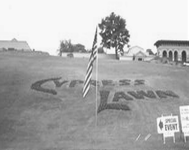
Cypress Lawn Cemetery – 1370 El Camino Real Colma, CA 94104
This cemetery, now known as Cypress Lawn Cemetery & Memorial Park, contains the graves of many Koreans. The remains of Dr. Jang In-hwan were also buried here before being moved back to Korea.
When early Korean immigrants passed away, they were primarily interred here. The graves of the late Lee Dae-wi and Yang Joo-eun remain, although Lee Dae-wi has since been moved to a national cemetery. Many Koreans continue to be buried here as a resting place for immigrant descendants.
Sanghang Korean United Methodist Church – 1123 Powell St. San Francisco
On September 23, 1903, Ahn Chang-ho, Lee Dae-wi, and ten others, including exiles, students, and ginseng merchants, organized the “Sinminhoe” and held their first worship service. This church later became the first Methodist church established on the mainland, serving as a center for relief efforts and enlightenment projects for compatriots after the earthquake, as well as a base for the independence movement.
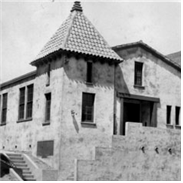
The magazine “Daedo” published by this church was the first publication in Korean in the Americas, used as a tool for evangelism and education among compatriots in both the Americas and the homeland. On June 1, 1930, the church building was completed at 1123 Powell St. with the support of the denomination’s mission department and donations, marking the first time they had their own building, where over 200 Korean residents and congregants gathered for the dedication ceremony. This church supported the activities of the Korean National Association and was a central hub for early Korean figures in America.
In 1994, when the church relocated, there were calls within the Korean community to preserve the church building as a historical site, leading to heated debates between the church and preservation associations, including a public hearing by the city’s historic preservation committee. Ultimately, the church prioritized its missionary mission, sold the building, and moved to the current location in the Sunset District of San Francisco.
Today, this site is occupied by a Chinese temple called “Gwangmyeong Dohyeon Okje Palace.” The Sanghang Korean United Methodist Church, which relocated to 3030 Judah St. San Francisco, CA 94122, celebrated its centennial in 2003, coinciding with the 100th anniversary of Korean immigration.
The Founding Site of the Korean National Association – 1914 Lyon St. San Francisco
The Korean National Association was founded by Ahn Chang-ho in San Francisco on May 13, 1913, to promote the national independence and development of individuals for the sake of the Korean people.development of individuals for the sake of the Korean people.
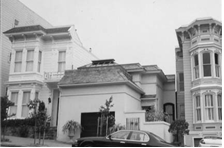
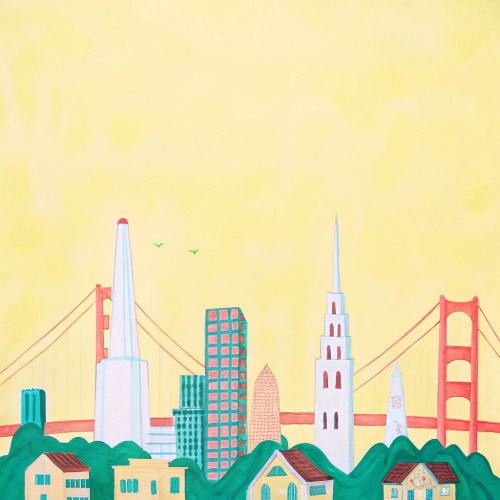
Leave a Reply